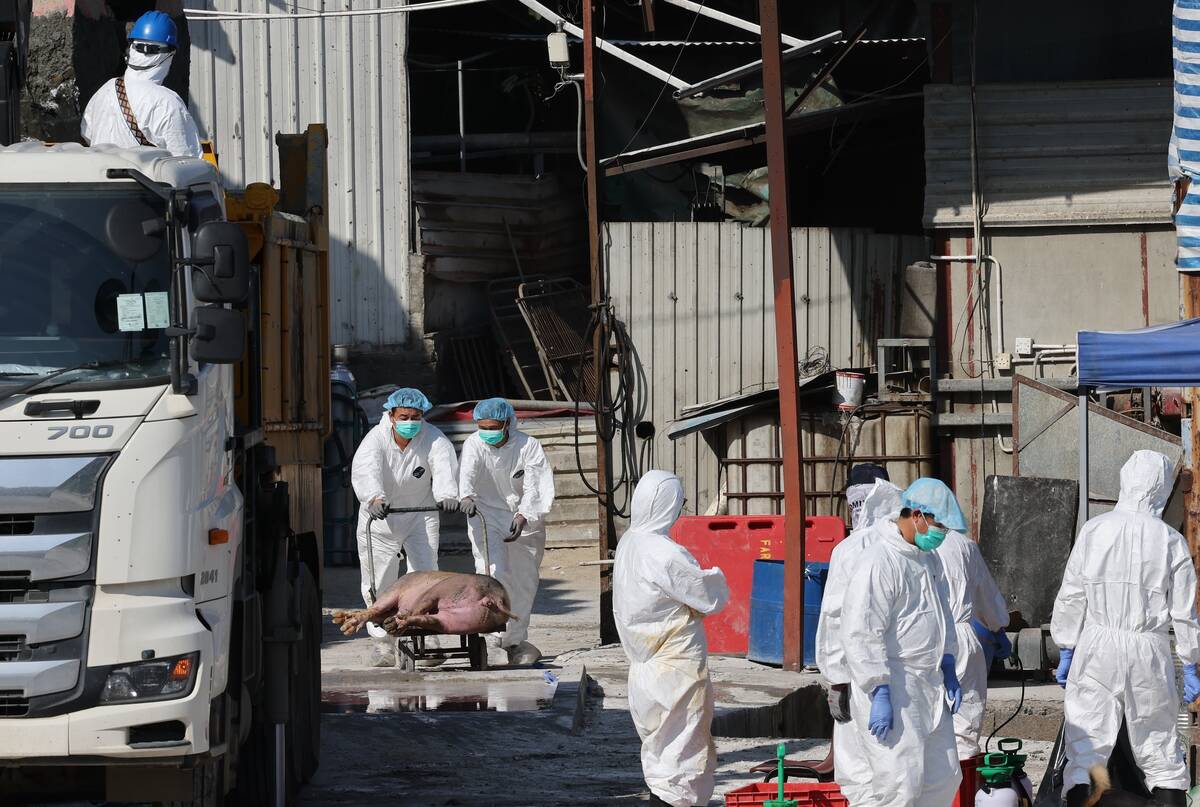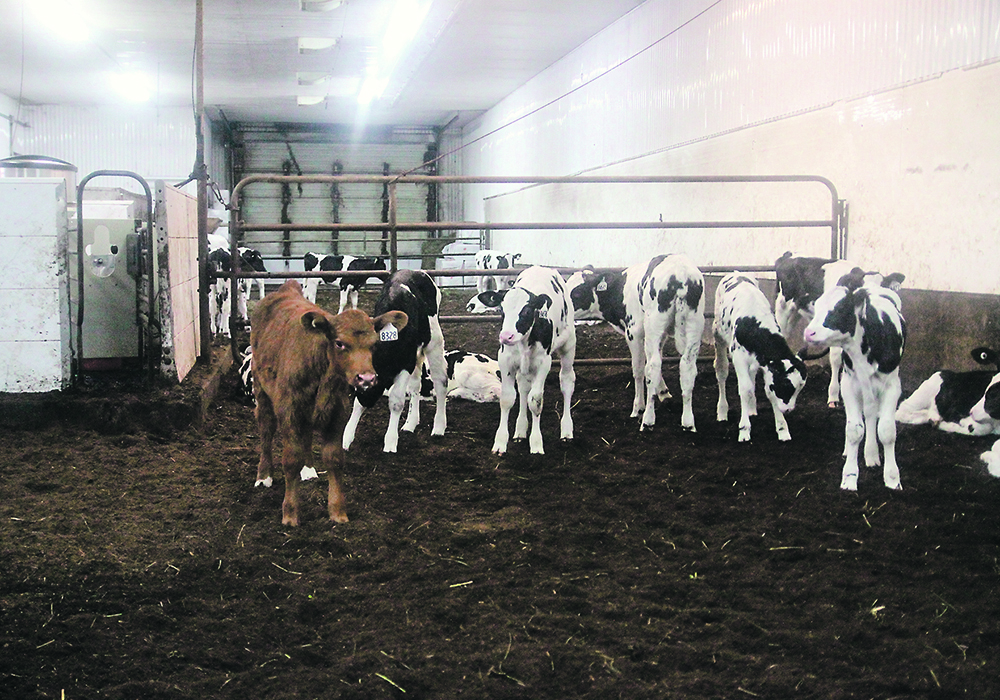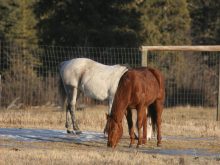Umbilical infections are a common problem many cow-calf producers will occasionally deal with in young calves.
The umbilical cord connects the fetus to the placenta during gestation, allowing the movement of nutrients and water to the fetus, as well as the removal of waste products.
The umbilical cord is a complex structure that encompasses two arteries: a large vein and the urachus, which allows the calf to drain urine from its bladder.
At birth, the umbilical cord is torn away from the placenta but remains attached to the calf’s circulatory system and to its liver. Because the umbilicus has now fulfilled its function, the arteries and vein start to atrophy and the umbilical cord dries up.
Read Also

Mixed results on new African swine fever vaccine
The new African swine fever vaccine still has issues, but also gave researchers insight into how virus strain impacts protection against the deadly pig disease.
However, exposure of the umbilical area to a contaminated external environment immediately after birth can result in a localized infection of the umbilicus and associated structures. These infections are typically caused by environmental bacteria such as E. coli and occur more commonly in wet, dirty calving areas or where the calving area is more crowded.
Umbilical infections can remain localized around the navel area and calves may have only moderate enlargement or it may progress to a more active inflammation with heat, pain and pronounced swelling and discharge. In some cases, the infection spreads beyond the navel area and can spread into the circulation of the calf causing a bacteremia.
These blood-borne infections can sometimes lead to joint infections and arthritis or liver infections. The worst-case scenario results in an infection in multiple organs and body systems, which is called septicemia. This is a life-threatening condition that can result in sudden death or severe disease with neurological symptoms.
An important component of preventing umbilical infections is to maintain a clean calving environment. However, that can be difficult for producers who calve indoors or in the spring.
Ensuring calves get adequate colostrum is important for any neonatal calf disease. Many veterinarians and producers have commonly thought that applying some sort of disinfectant to the navel after birth such as iodine would be beneficial in preventing umbilical infections.
Researchers at the Ontario Veterinary College at the University of Guelph recently published the results of a clinical trial in the Journal of Dairy Science evaluating the effectiveness of navel dipping to prevent umbilical infections. The trial was carried out on dairy calves on five dairy farms in southern Ontario.
Beef calves are managed somewhat differently, but we can probably take the results of this trial and apply them to beef calves as well. Dairy calves probably have a higher rate of umbilical infections and previous studies have suggested that umbilical infections in veal calves are an important cause of mortality.
The researchers and participating dairy producers enrolled 284 dairy calves into the trial. Most of the trial focused on female calves (244), but on one farm, 40 male calves were kept on farm for more than 60 days and were included in the trial.
Producers randomly selected calves to receive either a seven percent iodine navel dip or to be placed in a control group and receive no disinfectant. The dairy producer recorded how long after birth the disinfectant was applied, the time of first colostrum feeding after birth, as well as the calf ID and dam ID. They also scored the calving difficulty on a four-point scale and calving pen cleanliness.
Twice a week, researchers visited the farms and scored the health of the calves and evaluated the umbilical area of each calf, identifying those with infections.
By day 30, 20 percent of the calves in the iodine navel dip group and 22 percent of the calves in the control group had developed an umbilical infection. The difference was not statistically significant. There were no differences in the percentage of calves that developed bovine respiratory disease, diarrhea or in the percentage of calves that died in the two groups.
Researchers demonstrated that the timing of colostrum feeding had an impact on whether calves developed umbilical infections. Calves that received colostrum later after birth had a slightly increased risk of developing umbilical infections than calves that received colostrum immediately at birth.
They were also able to demonstrate that calves with a higher level of immunoglobulin in their blood tended to have a higher average daily gain between 30 and 60 days.
This study demonstrated that a single iodine navel dip was not effective in preventing umbilical infections in dairy calves. Researchers speculated that the antiseptic protection from a single iodine navel dip may start to decrease 15 minutes after application and that multiple applications might be necessary to provide protection against umbilical infections.
Clinical trials such as this one provide the best evidence about whether a treatment or vaccine is effective and despite decades of recommendations to use navel dipping, perhaps we should spend more effort on making sure calves receive adequate colostrum to prevent umbilical infections.
John Campbell is a professor in the department of Large Animal Clinical Sciences at the University of Saskatchewan’s Western College of Veterinary Medicine.















